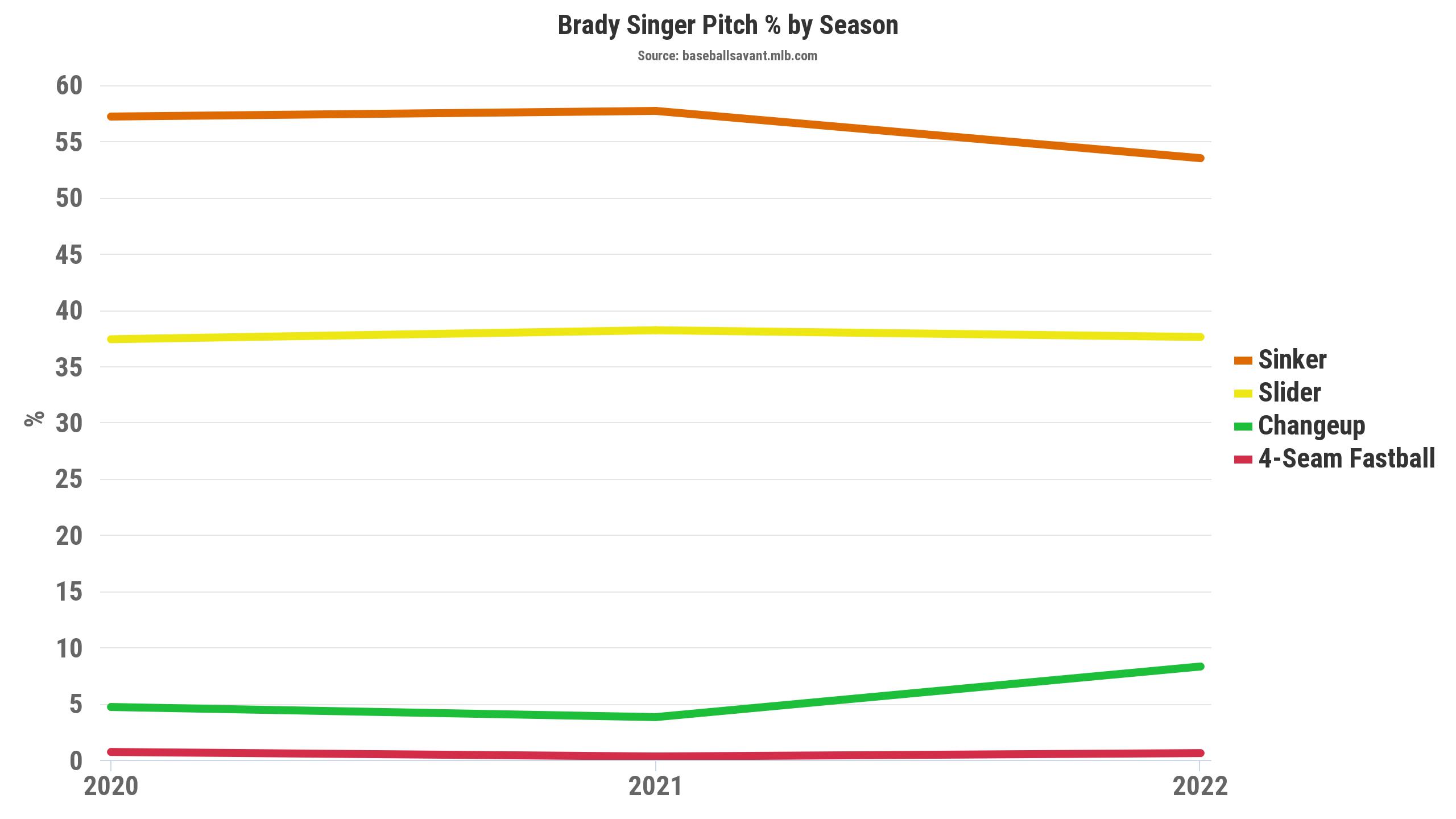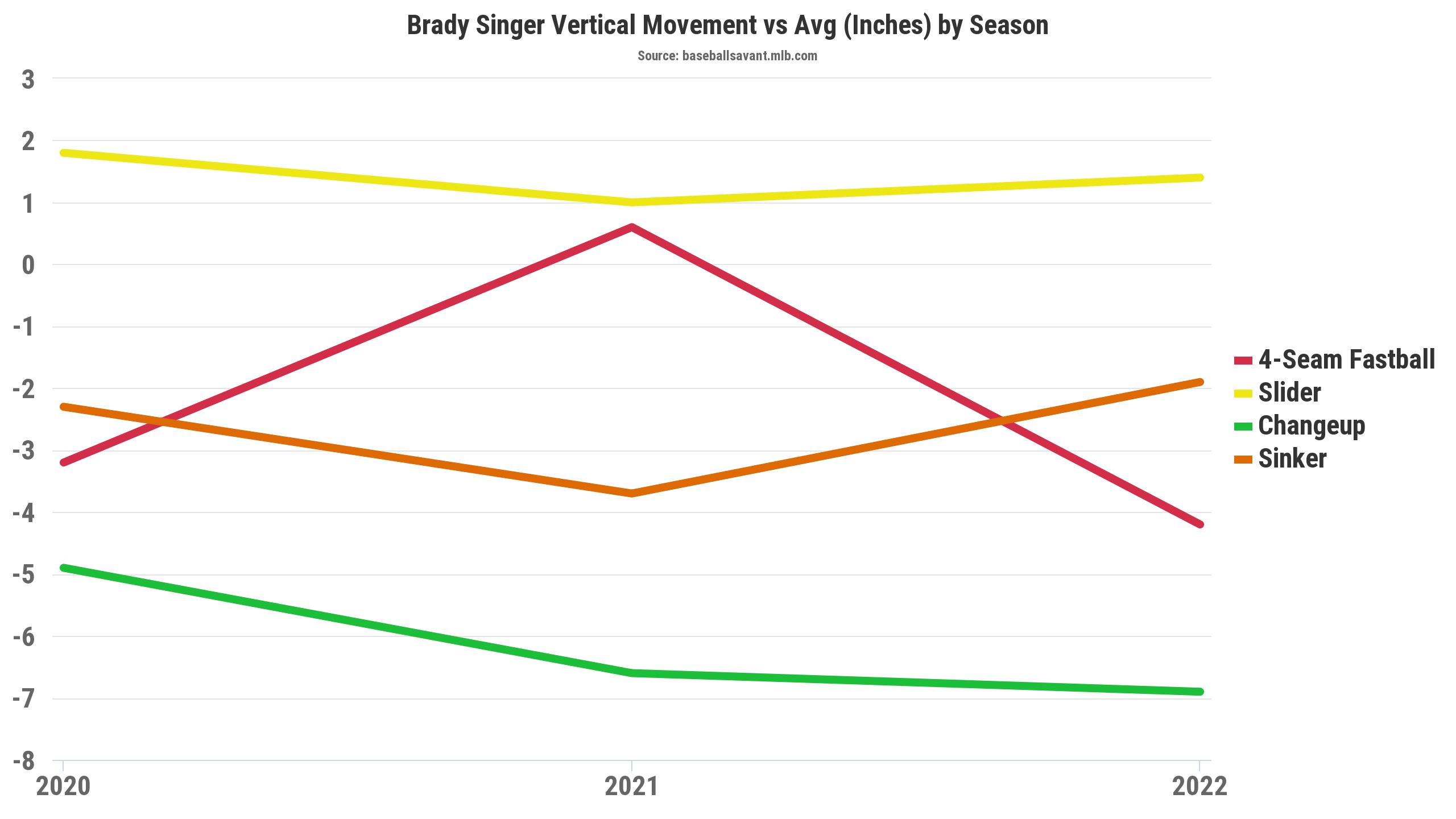With an ERA of 2.14 and a WHIP of 1.079, Brady Singer has pitched like an ace over the past two months. He’s racked up 71 strikeouts while issuing just 19 walks over that span. But has the Royal’s best starter evolved into a true ace or is he a wild card on an extended hot streak?
Singing His Praises
Brady Singer was originally drafted straight out of high school in the second round of the 2015 draft by the Toronto Blue Jays, but elected to head to college at the University of Florida rather than sign. This turned out to be a pretty good decision by the 6’5″ right-hander, as he helped Florida win the College World Series in 2017 and boosted his own stock enough that he was drafted in the first round of the 2018 MLB draft by the Kansas City Royals.
Singer spent just one full season in the minors, posting a 2.85 ERA over 148 innings split between High-A and Double-A in 2019. With no minor league baseball in 2020, since it was canceled due to the COVID-19 pandemic, the Royals made the decision to promote Singer to the big club, making him the first pitcher from the 2018 draft to debut in the Majors.
He didn’t exactly blow the doors off the league, but he acquitted himself well for the 26-34 Royals. He managed a 4-5 record with a 4.05 ERA while compiling 61 strikeouts and 23 walks over 64.1 innings. Strong enough numbers to earn him a handful of Rookie of the Year votes.
2021 saw Singer take a step back across almost all of his metrics, particularly in his walk rate. However, the 26-year-old has not just rebounded, he’s taken a huge leap forward this season. Not only is he Kansas City’s only starting pitcher with an ERA under 4.00, he’s also been the Royal’s de facto ace. His breakout season includes a very strong 3.15 ERA and 1.11 WHIP to support his 7-4 record. Singer’s success has mostly been based on significant gains in his walk and strikeout rates as illustrated in the table below.
The Un-Masked Singer
This chart serves both to show how far Singer has come in terms of walk and strikeout rates, and how those strong strikeout and walk rates can overcome or mask other issues. His K rate has improved from just about in line with the MLB average to well above average, and currently places inside the top third of the league. His walk rate has greatly improved as well.
In 2021, Singer’s walk rate sat just above the league’s bottom third, and this year that same rate sits just a single percentage point outside the top quarter of MLB pitchers. On the other hand, it is both noteworthy and surprising to see his hard hit rate, barrel percentage, and average exit velocity allowed all increase so much. After allowing league-average exit velocity, and better than average barrels over his first couple of seasons, Singer has seen batters barrel him up roughly one-third more often than league average. His hard hit percentage has also ballooned and sits at a rate about 20 percent worse than average.
Thankfully, Singer induces grounders on 47% of the balls that hitters put into play, which beats the league average of 44.9, and helps explain why his expected batting average against of .232 and BABIP of .291 both beat the league at large which sit at .245 and .291 respectively. It also helps that his CSW% continues to sit comfortably above the MLB average rate.
The Same Old Song
When a pitcher improves this much year over (and nearly a full run drop in ERA is pretty big), I like to see some sort of change in pitch mix or pitch quality. There should be some change in behavior or execution that explains the change in performance. With Singer, however, there is not much to look at in terms of his arsenal.

There is a bit of an uptick in Singer’s changeup usage, but overall he’s clearly a two-pitch pitcher and has been since he debuted. When facing Singer, batters are seeing the sinker or slider over 90% of the time, and while both have been effective (each offering has been credited with four runs saved so far this season) neither one is especially dominant. To add perspective, 55 other pitchers have sinkers credited with at least four runs saved, with Dillon Tate leading the way at 16, and a whopping 95 pitchers throw sliders credited with at least four runs saved, with Dylan Cease lapping nearly everyone with a mind-boggling 32 runs saved by his slide piece.
So if Singer’s arsenal hasn’t changed, perhaps it’s gotten sharper with added movement or velocity…

Nope. The lack of movement he generates on his changeup does explain why Singer hasn’t featured his offspeed offering to a greater degree. And while his sinker has improved, it’s only gotten back to its 2020 baseline in terms of movement, and still drops less than the average MLB sinker. It does possess 14 inches of arm side break, but that too is a bit below league average.
Singer’s slider drops about 37 inches, which is slightly better than MLB average, and generates a nice 35.7 whiff percentage which ranks inside the top 20 starters. And that’s it, his four-seamer doesn’t exist. Other than a greatly improved walk rate and mildly increased strikeout rate, Singer is essentially the same pitcher now that he was when he entered the league two years ago.
Fantasy Takeaway
Singer does have two good offerings, but no elite pitch to rely on, and since he uses those two pitches over 90% of the time, he does not have much wiggle room if one pitch isn’t working during an outing. Nick Pollack described Singer as a “cherry bomb” during a breakdown of his 12-strikeout performance versus the Rays back in July, and with his limited arsenal, it’s an apt description.
That aside, it’s hard to deny how great Singer’s two-month run has been. Over ten starts since the beginning of July, Singer has allowed more than two earned runs just twice. He’s gone at least six innings in nine of those ten starts, earning eight quality starts and four wins. His season ERA over that span has dropped over a run from 4.33 all the way down to 3.15. And this run includes 13 combined shutout innings versus the Yankees and Dodgers—it hasn’t just been weak competition.
Singer has been excellent for two months and has shown significant improvement in his strikeout rate and even more so in his walk rate, but his elevated hard contact, exit velocity, and barrel rates make it hard to believe his overall performance is sustainable and raises legitimate concerns that a blow-up start or some less explosive regression could be on the horizon.
I’d love to see Singer develop and utilize his changeup more before bumping him up from a matchup-based play to someone I’d start in almost any situation. He’s been the ace of the Royals staff but has to continue to develop before he earns that title as a fantasy starter.
Photo by Joe Robbins/Icon Sportswire | Adapted by Justin Redler (@reldernitsuj on Twitter)

